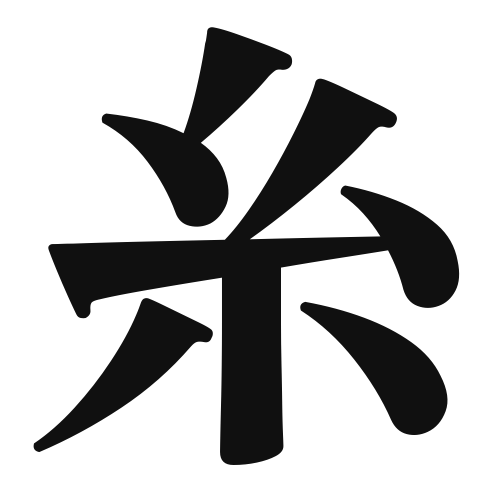1. Overview of Meaning
The kanji “糸” (ito) means “thread” or “string.” It represents something thin and elongated, often used in the context of textiles and sewing.
2. Formation and Radical
Formation of the Kanji: The kanji “糸” is a pictogram that visually represents threads or fibers. It belongs to the category of ideograms, as it conveys the concept of thin, elongated materials.
Radical: The radical for “糸” is also “糸,” which is used in other kanji related to textiles and threads.
3. Examples of Usage
Common Words and Phrases: Some frequently used words that include “糸” are:
- 糸電話 (いとでんわ, itodenwa) – “string telephone”
- 糸巻き (いとまき, itomaki) – “spool of thread”
Example Sentences in Daily Conversation:
- この糸はとても強いです。 (このいとはとてもつよいです。) – “This thread is very strong.”
- 糸電話で遊びました。 (いとでんわであそびました。) – “I played with a string telephone.”
4. Synonyms and Antonyms
Similar Kanji: A similar kanji is “線” (せん, sen), which means “line” or “wire.” While both refer to thin, elongated objects, “線” is more about lines in general, whereas “糸” specifically refers to threads or strings.
Antonyms: An antonym could be “塊” (かたまり, katamari), meaning “lump” or “mass,” which refers to something thick and solid, contrasting with the thinness of “糸.”
5. Cultural and Historical Background
Relation to Japanese Culture: In Japanese culture, “糸” is significant in traditional crafts such as weaving and sewing. It symbolizes connection and continuity.
Proverbs and Idioms: One common idiom is “糸が切れる” (いとがきれる, ito ga kireru), which means “to lose connection” or “to break ties,” often used metaphorically in relationships.
